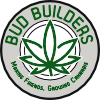pk1
Stoned Scientist
- Joined
- May 22, 2023
- Messages
- 33
- Reaction score
- 142
Here are some helpful charts that can help you diagnose your plant's problems.
pH is really a measure of the relative amount of free hydrogen and hydroxyl ions in the water. Water that has more free hydrogen ions is acidic, whereas water that has more free hydroxyl ions is basic. Since pH can be affected by chemicals in the water, pH is an important indicator of water that is changing chemically.
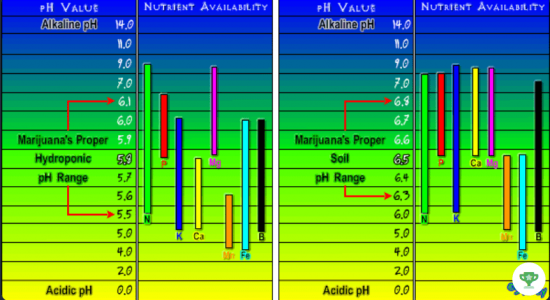
Certain deficiency symptoms, like magnesium (Mg), nitrogen (N) and potassium (K), you will see again and again, because they are so common.
If it's not an obvious one that you've seen before, start thinking about things in a step-wise manner:
1. What part of the plant is showing the symptom? Is it a growing point or mature leaves? If it is a growing point, the problem is an immobile nutrient in the plant. If it's a lower leaf, the problem is a mobile nutrient in the plant. ("In the plant" as opposed to "in the soil.")
2. Is your pH in the right range for your media/method of growing? If not, the nutrient might be in the soil, but it's not in a form the plant can take up. Adjusting the pH can make the nutrient more soluble and plant-available.
3. Is there any reason to believe an interaction with another nutrient is causing lockout? The reason could be that you just recently added a lot of calcium (Ca), phosphorus (P) or N. Look at the Mulders Chart to get a handle on possible nutrient interactions.
Mobile nutrients include N, P, K, and Mg. These show up on lower leaves.
Immobile nutrients include Sulfur (S) — though some texts say it's mobile, Ca (though sometimes it's a little mobile), and just about all the micronutrients (the metals, like iron, manganese, copper, zinc, nickel). These show up on growing points.
Deficiency symptoms on lower leaves never go away when you fix the problem, so don't expect it. Deficiency symptoms at growing points usually do go away when you fix the problem.
4. Once you know whether it's a mobile or immobile nutrient, look at the assorted charts and pictures of the specific symptoms in a google search.
5. Sacrifice a goat* at an alter in front of your tent to let the plants know that you are on the case and searching for guidance.
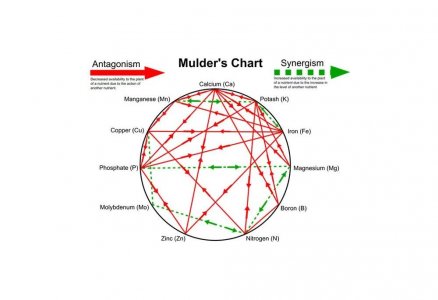
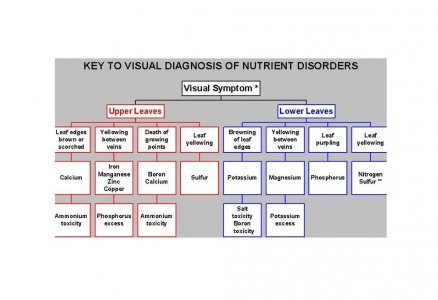
In this chart, try to see which plant fits to your plant's problems.
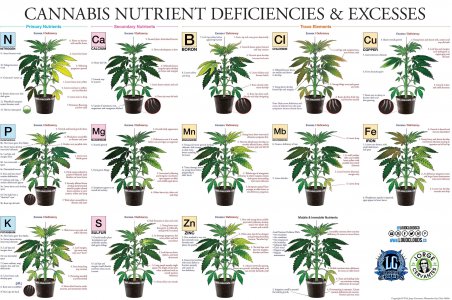
Determining When To Harvest Cannabis For Maximum Trichomes
Trichomes and pistils are two of the most accurate visual indicators for determining when cannabis bud is ready to harvest. They provide insight into that perfect harvest window for your cannabis crop.
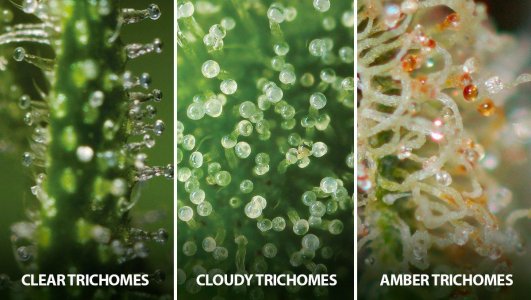
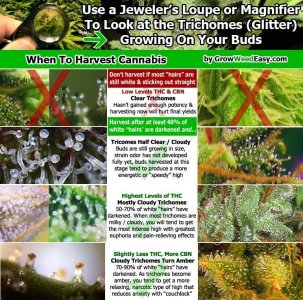
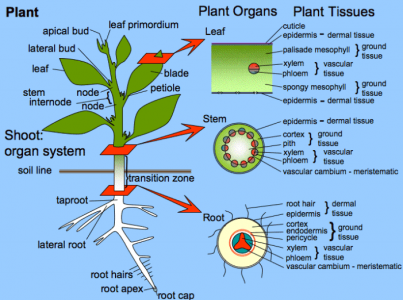
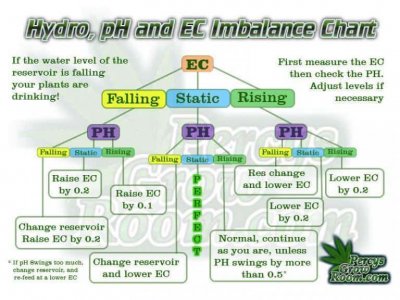
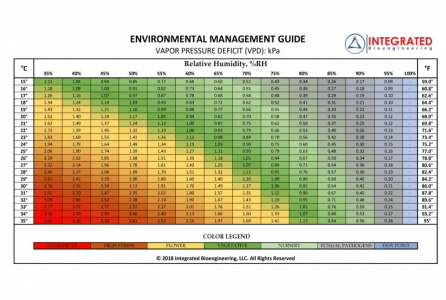
pH is really a measure of the relative amount of free hydrogen and hydroxyl ions in the water. Water that has more free hydrogen ions is acidic, whereas water that has more free hydroxyl ions is basic. Since pH can be affected by chemicals in the water, pH is an important indicator of water that is changing chemically.

Certain deficiency symptoms, like magnesium (Mg), nitrogen (N) and potassium (K), you will see again and again, because they are so common.
If it's not an obvious one that you've seen before, start thinking about things in a step-wise manner:
1. What part of the plant is showing the symptom? Is it a growing point or mature leaves? If it is a growing point, the problem is an immobile nutrient in the plant. If it's a lower leaf, the problem is a mobile nutrient in the plant. ("In the plant" as opposed to "in the soil.")
2. Is your pH in the right range for your media/method of growing? If not, the nutrient might be in the soil, but it's not in a form the plant can take up. Adjusting the pH can make the nutrient more soluble and plant-available.
3. Is there any reason to believe an interaction with another nutrient is causing lockout? The reason could be that you just recently added a lot of calcium (Ca), phosphorus (P) or N. Look at the Mulders Chart to get a handle on possible nutrient interactions.
Mobile nutrients include N, P, K, and Mg. These show up on lower leaves.
Immobile nutrients include Sulfur (S) — though some texts say it's mobile, Ca (though sometimes it's a little mobile), and just about all the micronutrients (the metals, like iron, manganese, copper, zinc, nickel). These show up on growing points.
Deficiency symptoms on lower leaves never go away when you fix the problem, so don't expect it. Deficiency symptoms at growing points usually do go away when you fix the problem.
4. Once you know whether it's a mobile or immobile nutrient, look at the assorted charts and pictures of the specific symptoms in a google search.
5. Sacrifice a goat* at an alter in front of your tent to let the plants know that you are on the case and searching for guidance.


In this chart, try to see which plant fits to your plant's problems.

Determining When To Harvest Cannabis For Maximum Trichomes
Trichomes and pistils are two of the most accurate visual indicators for determining when cannabis bud is ready to harvest. They provide insight into that perfect harvest window for your cannabis crop.





Last edited:
